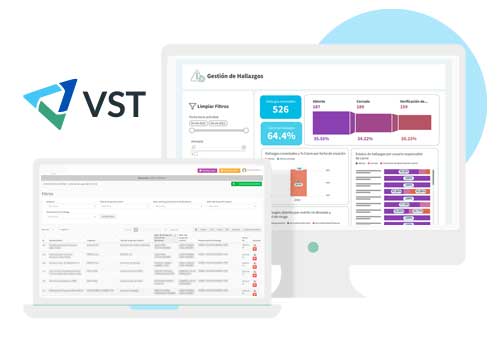
Educating for Sustainability: Why Environmental Awareness Matters
In today’s world, sustainability awareness has become a crucial aspect

Adhering to industry regulations and standards not only protects your business from legal and financial repercussions but also builds trust and credibility among stakeholders. However, managing compliance manually can be time-consuming and error-prone, especially for large-scale and expanding businesses.
That’s where compliance management software comes in, streamlining the process and helping businesses ensure regulatory adherence efficiently and effectively. In this article, we’ll explore the benefits of using compliance management software and provide a guide on how to implement it in your organization.
Compliance management refers to the process by which organizations ensure that they are operating within legal and regulatory frameworks. It involves identifying applicable rules and standards, understanding their requirements, creating policies to address compliance-related issues, monitoring compliance efforts, and reporting on compliance outcomes. Compliance is crucial because it helps organizations avoid legal and financial risks, maintain ethical standards, and protect against reputational damage. Failure to comply with regulations can result in civil or criminal charges, fines, or other penalties that can have significant consequences for businesses.
Compliance plays an essential role in all aspects of business operations. It ensures that businesses are operating legally and ethically and helps build trust and credibility among stakeholders. Compliance management helps organisations to protect the interests of their employees, customers, and other stakeholders, by ensuring that best practices are in place.
Many industries have specific regulatory frameworks that organizations must follow. For example, businesses operating in the financial, healthcare, or energy sectors have unique regulatory requirements that they must adhere to. Some of the most commonly referenced regulatory frameworks include the General Data Protection Regulation (GDPR) in Europe, the Payment Card Industry Data Security Standard (PCI-DSS), Health Insurance Portability and Accountability Act (HIPAA), and the International Organization for Standardization (ISO/IEC) 27001.
Although necessary, managing regulatory compliance can be a substantial burden for organizations. Manual compliance management can be a time-consuming process, typically handled by compliance officers and other dedicated professionals within an organization. Keeping up with new and evolving regulations can be challenging, and the potential for human error can lead to costly mistakes. As compliance demands grow, this approach becomes increasingly unsustainable.
One of the biggest challenges of managing compliance manually is that it can be difficult to keep up with the ever-changing regulatory landscape. New regulations are constantly being introduced, and existing regulations are frequently updated. This means that compliance officers must stay up to date with the latest changes and ensure that their organization is adhering to them.
Another challenge of manual compliance management is that it can be time-consuming. Compliance officers must review and interpret regulations, develop policies and procedures, and monitor compliance efforts. This can take up a significant amount of time, which can be a challenge for organizations that are already stretched thin.
In addition to these challenges, managing compliance manually can also be prone to human error. Compliance officers are responsible for ensuring that their organization is following all applicable regulations, but mistakes can happen. This can lead to costly fines and penalties, as well as reputational damage.
Given these challenges, many organizations are turning to technology to help them manage compliance more effectively. Compliance software can automate many of the tasks involved in compliance management, such as tracking regulatory changes and monitoring compliance efforts. This can help organizations save time and reduce the risk of human error.
Overall, compliance management is a critical function for organizations of all sizes and industries. By ensuring that they are operating within legal and regulatory frameworks, organizations can protect themselves from legal and financial risks, maintain ethical standards, and build trust and credibility among stakeholders.
Compliance management is an essential aspect of any business, particularly in industries that are heavily regulated. However, managing compliance can be a complex and challenging task. Compliance officers are required to keep up with ever-changing regulations, standards, and guidelines, while also ensuring that their organization remains compliant with these requirements.
Thankfully, compliance management software presents a reliable solution to these challenges. Compliance software improves compliance management by streamlining compliance processes, reducing the potential for human error, and improving flexibility.
Compliance software automates many of the most time-consuming tasks related to compliance management. This automated approach helps to streamline processes, making it easier to keep up with ever-changing regulations and standards. Compliance officers can spend more time monitoring compliance efforts rather than performing repetitive administrative tasks.
Moreover, compliance software can also help organizations to identify potential compliance issues before they become problems. By automating compliance processes, compliance officers can quickly identify areas where compliance efforts may be falling short, allowing them to take corrective action before any breaches occur.
Compliance software significantly reduces the potential for human error, making it easier to manage large volumes of complex data accurately. With automated workflows and real-time alerts, compliance officers can identify issues quickly, reducing the risk of compliance breaches and associated legal and financial costs.
Furthermore, compliance software can also help organizations to maintain compliance with multiple regulatory frameworks simultaneously. This is particularly important for businesses that operate in multiple jurisdictions, where compliance requirements can vary significantly.
Compliance software eliminates many of the manual tasks that would typically consume time and resources. Automation reduces the workload on compliance officers and other staff tasked with maintaining regulatory compliance, freeing up time to focus on other critical areas of the business.
With compliance software, organizations can also reduce the need for external consultants and auditors. Compliance software can provide real-time compliance monitoring and reporting, reducing the need for costly external audits.
Compliance management software also promotes collaboration and information-sharing between departments. With interfaces that allow compliance officers to communicate with other departments, information can be shared efficiently and stakeholders can remain informed about regulatory developments, without the need for lengthy meetings or emails.
Moreover, compliance software can also help organizations to maintain compliance with their suppliers and partners. By providing a centralized platform for compliance management, organizations can ensure that their suppliers and partners are also compliant with relevant regulations and standards.
In conclusion, compliance management software provides a range of benefits to organizations, including streamlined compliance processes, reduced risk of compliance breaches, and improved collaboration and communication
between departments. By investing in compliance software, organizations can ensure that they remain compliant with regulatory requirements, while also improving efficiency and reducing costs.
When considering compliance management software, there are a few key features to look for:
The software should allow users to import custom regulatory frameworks, or use preexisting frameworks that the software provider offers, to quickly implement compliance programs that suit their industry and regulatory requirements.
For example, if your organization operates in the healthcare industry, you may need to comply with regulations such as HIPAA, which governs the protection of patient data. The software should be able to accommodate these regulations and allow for customization based on the specific needs of your organization.
Additionally, the software should be able to adapt to changes in regulations, ensuring that your compliance efforts remain up-to-date and effective.
The software should allow compliance officers to monitor compliance efforts automatically and provide real-time alerts when issues arise. This feature can help organizations stay ahead of potential compliance violations and take corrective action before they become larger problems.
Comprehensive reporting features make it easier for organizations to remain aware of their regulatory compliance standing and to identify areas that need improvement. Reports can be generated on a regular basis to keep stakeholders informed and ensure that compliance efforts are on track.
The software should integrate with other systems within the organization to facilitate a more streamlined workflow and minimize the risk of data entry errors. This integration can include systems such as HR, finance, and IT.
For example, if an employee leaves the organization, their access to certain systems may need to be revoked to maintain compliance. By integrating with the HR system, the compliance management software can automatically update access permissions, reducing the risk of compliance violations.
The software should have user-friendly interfaces and be accessible via desktop and mobile devices. A well-designed interface makes it easier for staff to access necessary information, collaborate, and meet compliance expectations.
Accessibility is also important, as compliance officers may need to access the software while on-the-go or working remotely. Mobile accessibility ensures that compliance efforts can continue even when staff are not in the office.
Overall, compliance management software can be a valuable tool for organizations looking to maintain regulatory compliance. By considering these key features, organizations can select a software solution that meets their specific needs and helps them stay ahead of potential compliance violations.
Implementing compliance management software can be a game-changer for your organization. It can help you manage regulatory requirements, reduce risks, and streamline compliance processes. However, the process of implementing such software can be daunting. Here are some steps to help you get started:
Before implementing compliance management software, it is essential to assess your organization’s compliance needs. This involves identifying the regulatory frameworks and standards that apply to your industry and organization. For instance, if you operate in the healthcare industry, you need to comply with HIPAA regulations. Similarly, if you are in the financial industry, you need to comply with regulations such as SOX and Dodd-Frank.
Once you have identified the regulations that apply to your organization, you need to determine your compliance requirements. This involves identifying the features and functionality required from any compliance software solution you consider. For instance, you may need a system that can track employee training, manage policies and procedures, and generate compliance reports.
After assessing your compliance needs, you can begin evaluating compliance management software solutions. There are several factors to consider when choosing the right software, including:
Once you have chosen a compliance management software system, you will need to train your employees on its use. This is critical to ensure that they are comfortable using the software to manage compliance efforts. Consider providing training sessions, user manuals, and online resources to help your employees get up to speed.
Implementing compliance management software is not a one-time event. It requires continuous monitoring and improvement to ensure that your organization remains compliant with changing regulations. Regularly reviewing data and reports can help you identify areas of weakness, potential breaches in compliance, and opportunities for improvement. By continuously monitoring and improving compliance efforts, your organization can keep up with changing regulations and remain proactive in preventing legal and financial risks.
Implementing compliance management software is an investment in your organization’s future. It can help you reduce risks, increase efficiency, and improve compliance efforts. By following these steps, you can ensure a successful implementation and reap the benefits of compliance management software.
Ensuring your business adheres to legal and ethical standards is critical in minimizing potential liabilities and protecting your reputation. It’s here that Vela Sustainability Technologies steps in, offering world-class, enterprise-grade solutions to manage regulatory compliance. By automating processes, our technology not only streamlines your operations but also mitigates the risk of human error. With Vela Sustainability Technologies, you’re not just ensuring compliance. Our system also supports effective Operational Health & Safety, Clinical Health & Wellness, Environmental Management, Governance & Compliance Management, and Social Investment & Impact, among other crucial areas.
Our unique modular approach allows your organization to focus on areas that will deliver the greatest impact and value, freeing you to concentrate on what truly matters to your business. From assessing your compliance needs to choosing the right software, from training and onboarding employees to continuously monitoring and improving compliance efforts, we help you simplify compliance management and bolster trust and credibility among your stakeholders.
If you’re ready to take your compliance management and overall business sustainability to the next level, don’t hesitate to reach out to us. More detailed information can be found at www.velasustainability.com
With Vela Sustainability Technologies, your business has the potential to thrive within the evolving landscape of sustainability and compliance.

In today’s world, sustainability awareness has become a crucial aspect

The Significance of April 28th: World Day for Safety and
